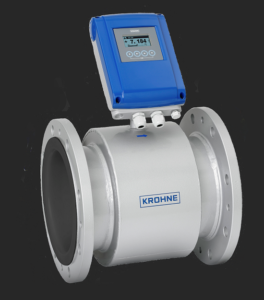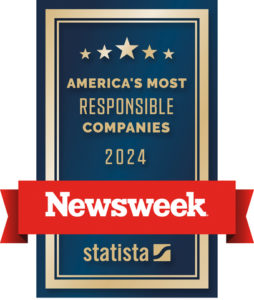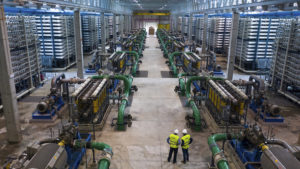Desalination Market Moving to Reverse Osmosis and Larger Flow Control Expenditures
Nearly 80 percent of the investment in desalination this year will be for membrane treatment as opposed to thermal.
The $8 billion which will be spent on membrane systems represents a large market for suppliers of valves, pumps and filtration equipment. This is the conclusion reached by the McIlvaine Company by aggregating forecasts in a number of its water related reports.
The investment in the membrane portion will be $2.7 billion. This includes the replacement membranes and modules as well as the new equipment using microfiltration, ultrafiltration and reverse osmosis. The salt is removed in the reverse osmosis system but either microfiltration or ultrafiltration is used to pre-filter the seawater.
The U.S. market is poised to accelerate as cities want a more secure water supply. San Diego has purchased a system from IDE which will be the largest in North America. It will process more than 100 MGD of seawater and produce more than 50 MGD of drinking water. Desalination became attractive to San Diego based on reduced operating cost.
Early desalination membranes removed about 98.4 percent of the salt and required an extra pass through a second array of filters. According to IDE, they cost about $500 each and lasted three years. Today s filters extract 99.8 percent of salt, cost $350 and can last seven to eight years, making large-scale desalination feasible. Power-saving devices employ leftover brine to spin turbines which, in turn, run pumps cutting energy use by 45 percent.
Of the $5.3 billion, which will be spent for the balance of the membrane systems, pumps, valves and piping represent a big portion. Pumps to move the pure water through the reverse osmosis membranes are major components of desalination systems. Pitting, crevice corrosion and stress corrosion cracking are major challenges in processing seawater and brackish water. Pump companies such as Sulzer and Flowserve address these issues with a range of materials, including super austenitic stainless steels, duplex stainless steels, bronze alloys, nickel alloys, and Ni-Resist metals along with engineered polymers. Flowserve maintains its own steel, nickel and light reactive alloy foundries.
Reverse osmosis requires high pressures and, therefore, high energy consumption. However, because of some novel pump designs, much of this energy can be and is being recaptured Energy Recovery has a type of pump called the PX Pressure Exchanger which captures hydraulic energy from the high-pressure reject stream of seawater reverse osmosis processes and transfers this energy to low-pressure feedwater with an efficiency of over 98 percent. Because the PX device itself consumes no electrical power, the overall energy consumption of the seawater reverse osmosis process is drastically reduced.
Special valves are needed to contend with the corrosion and pressures. Pentair supplies butterfly and check valves meeting all the requirements. Victaulic has acquired the desalination business of MTS Valves & Technology, which designs and manufactures plug valves for the global desalination market. Victaulic offers a complete line of grooved couplings, fittings and valves for high-pressure desalination and reverse osmosis applications.
Cartridges, sand filters and automatic backwash filters are typically used for pre-filtration. The choice is critical. Plugging problems have caused major problems when the wrong combinations are chosen.
The performance of the systems is dependent on accurate measurement of flow and water quality as well as control of the variables to ensure high water purity at minimum energy consumption. Companies such as ABB, Emerson and Yokogawa provide integrated solutions.
Source: The McIlvaine Company







